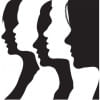A continuous struggle
We have come a long way since 1909, more than a century ago, when the first Women's Day was observed in the United States, and since 1917, when women gained suffrage in Soviet Russia, and March 8 became a national holiday there. The International Women's Day (IWD) was first celebrated 43 years ago today, in 1975. Quite some time has passed since these milestones in the long struggle for women's rights were achieved. Where do we stand today?
Despite the leaps and bounds we have made in gender equality, there is a lot of work to be done. Violence against girls and women is rampant. Wage gap is far from being closed. Women's unpaid work is yet to be recognised.
In Bangladesh, where girls are forging ahead in the realms of education, law enforcement, civil service, etc., how do we reconcile with the fact that the rate of child marriage in the country is the fourth highest in the world? Or that a large percentage of women in the informal sector lack legal and social protection? How should we come to terms with the fact that women's safety in the public space is not guaranteed? According to a recent Brac study, 94 percent of women surveyed said that they experienced harassment in public transport.
This is just the tip of the iceberg. At the root of it all lie deeply entrenched social norms and patriarchal attitudes. They cannot be eradicated in a matter of years, or even decades. But we have got to start somewhere—activism at the grassroots level and political leadership must lead the way. As we observe IWD at a time when movements like #MeToo have lent momentum to gender parity on a global level, it is time we realised that the road to equality is a universal one. We are all in it together.

 For all latest news, follow The Daily Star's Google News channel.
For all latest news, follow The Daily Star's Google News channel. 








Comments